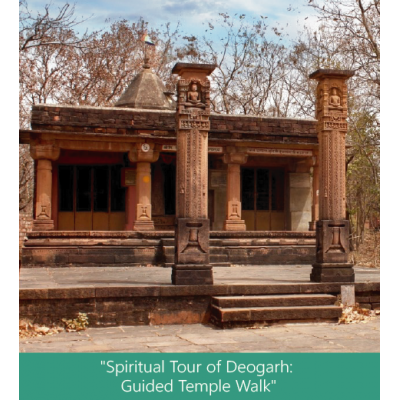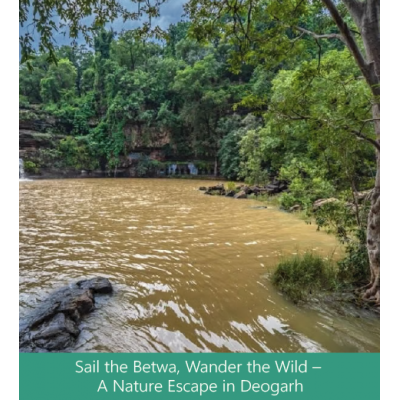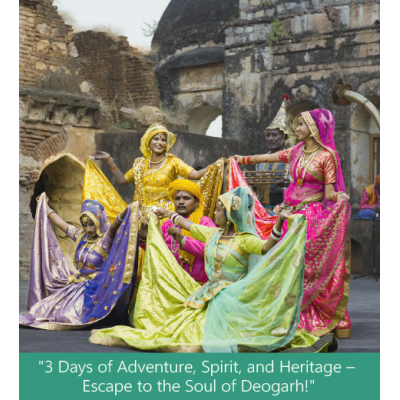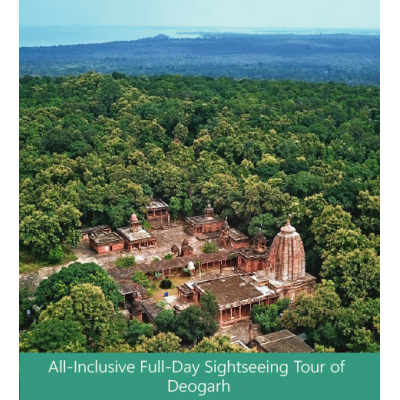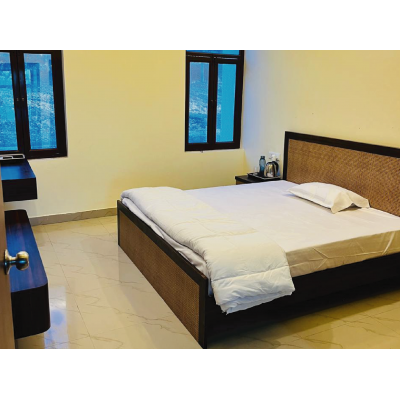
DEOGARH JAIN HERITAGE, UTTAR PRADESH
If we turn out the pages of history regarding Jain heritage, we see that most of the history records are intact in South India but in North India these records are not placed in a proper manner or we can say we lost it due to Mughal invasion or other reasons which are not known exactly. Nevertheless today we will try to provide some informations about the 8th century Jain heritage in Deogarh where at one time almost 35 to 41 Jain temples were existed but official number given by ASI is 31.
Deogarh or Devgarh is a small village in Lalitpur district of Uttar Pradesh in India. It consists two words where Deo is a sanskrit word which means deva or god and garh means a large fort. The Jain temples occupy the eastern portion of the Deogarh fort and this fort is on the hill which is enclosed by an inner surrounding wall. Approx 2000 Jain carvings can be seen here which is more than in comparison to the carving of Jain idols at Gwalior fort of Madhya Pradesh. Even Jain carvings in such a huge number at one place are not identified at another location till date.
At present it is protected by Archeological Survey of India (ASI) and managing by the 'Shri Deogarh Managing Digambar Jain Committee'
Alexander Cunningham who was the founder of Archeological Survey of India was the first person who described Deogarh. He visited this site between 1874-75 and according to him this fort was built during the reign of Chandela dynasty King. An inscription which was dated as Samvat 1154 informed that Kirtivarman snatched the entire area from enemy and built a fort Kirtigiridurg and it later renamed as Deogarh Fort under the reign of Bundela Princes. Kirtivarman ruled over the Bundelkhand region which is now divided between the state of Uttar Pradesh and Madhya Pradesh.
These pillars were used in the construction of one of the Jain temple of Deogarh on which inscriptions were found and it was dated as Samvat 919. As per the inscriptions SRIDEVA who was the disciple of Acharya Kamaldeva, constructed these pillars but the temple in which these pillars were used was erected prior to samvat 919 and it was dedicated to Tirthankara Shantinath. It is the main temple in the whole group and different dated inscription records indicate that one inscription refers to the actual construction and others are related to repair work carried on time to time.
More than 400 inscriptions were found in the area covered by the Jain temples of Deogarh, the majority of which are dated. These inscriptions identifying sculptural representation were extremely rare in almost all period of Indian art. It contain the name of Tirthankaras,monks, acharyas, bhattarakas (who consecrated the idols),donors, goddess,sculpture artists and dynastic names. Unfortunately despite the dynastic inscriptions of the North it could not be completely and systematically researched.
The inscriptions mention several prominent persons. An inscription dated samvat 919 was found from Deogarh mentioning King Bhoja of Kannauj. He ruled Kannauj in the late 8th century C.E. and was a Jain King. Deogarh was under control of Gurjara Pratiharas from Samvat 919 to 1025. The period from Samvat 1154 to 1239 can be regarded as Chandela Kingdom. Few inscriptions also mention the name of rulers of Bundela period.
The Jain idols and figures of Deogarh temple are in part cut out of the slabs, partly carved on the walls and partly freely stand. Most of the idols were donated individually and gradually filled the temples.Historians believed that due to this reason the idols contained in a same temple are varying in terms of art and style. Deogarh Jain temple group sheds light on the architecture of Gupta period. post Gupta period, early medieval period and medieval period. During the survey by ASI a Jina image was discovered which established that a Jain temple existed here in 7th or 8th century. It means traces were available indicating that it was a Jain centre in the 7th century too.
In Deogarh hundreds of the images were destroyed by the art thieves and many were stolen for its illegal export. As a safeguarding Deogarh temples were locked and some important idols were transferred in a nearby Dharamshala (pilgrims lodging).
In 1930 an operation carried out among the Jain temples comprising removal of the vegetation from all the 31 temples, the clearance of debris etc to repair this group of temples and later this responsibility was transferred to the 'Shri Deogarh Managing Digambar Jain Committee'
Above idol in standing posture is of the 16th Tirthankara in Jainism Shri Shantinath Swami. Tirthankara was identified by the five inscriptions where name of Tirthankara Shantinath ji was carved. It is from the main temple which is marked as number 12 in this complex out of 41 Jain temples on the hill. One inscription dated as Samvat 1051 revealed that due to this main temple and idol this entire place was called as Shri Shantinath Tirtha. Tirthankara idol was found without any vandalisation with Ambika image in front. From this temple 5 idols of Yakshini were found out of which some were partly damaged.
When the survey work was going on an idol of a Digambar Jain Acharya was unearthed. It was dated samvat 1333 with five lines inscription on pedestal. It was slightly damage to the book held by Acharya and remaining piece was completely fine. Inscription contained some name of Jain Acharyas like Kanak Chandra Dev, Lakshmi Chandra Dev with the name of their disciple and sculptor who carved this idol. This site appears to have been a very rich Jain centre which provided lots of archeological material and data of historical art. Deogarh proved a treasure house of medieval sculptures.
This image is unique where two Jain acharyas are noteworthy. It breaks the common pattern and included in one of the most unconventional feature of Jain iconography. Idol is rich with parikara flanked by two standing Jinas and interestingly pedestal was carved with the yakshi Chakreshwari and yakshi Ambika. In general we see carvings related to yaksha and yakshini but here both side images of yakshini were carved. In Deogarh other carvings of Jain acharyas were found on the pillars of Jain temple and related structure. On the left hand side idol of Tirthankara Parshvanath is 4 feet and 8 inch high and at that time was located in temple number 4.
Deogarh heritage is peculiar in terms of iconography and we have another example of this with the idol of Bhagwan Bahubali Swami which was found from the main temple. Bahubali was the son of first Tirthankara Rishabhadeva or Adinath. He was not a Tirthankara and generally srivatsa mark (a unique sign on the chest) is related with the idols of Tirthankaras but here srivatsa sign is visible on this idol with other standard attributes creepers. snakes, lizard and scorpions. On both sides images of his sisters are carved Brahmi and Sundari. They are holding the ends of creepers and trying to remove it from the body of his brother who was in deep meditation. The presentation of snakes over the idol of Bahubali is notable which you will not see in other ancient idols of Bahubali Swami.
Jina images at Deogarh provides an unusual style of variety of Indian art. Lack of stylistic uniformity was observed but all findings and material were itself sufficient to demonstrate early medieval pluralism. In fact as per historians several images at Deogarh should have been counted among the best example of Indian sculpture.Several colossal images were found from the pradakshina path of the main temple and this idol was one from that collection. Some illegible words were engraved on the pedestal.Unlike the idol of Bahubali here curly hairs are shown instead of plain jata and historians classified it in Drum Style architecture.
J.E Van Lohuizen- De Leeuw, who was a Dutch Archaeologist said these words to the above attached idol,"The beauty of this marvellous Jina with serene expressions is unforgettable." She was the director of the institute of South Asian archeology. She visited Deogarh twice. Once in 1956 where on her way a Jain family welcomed her to their home and offered meal in a small village near by Jakhlaun and second time she visited in 1964.
In the absence of symbol, name of Tirthankara could not be identified. There was no inscription on it but it was the main idol of Temple number 15. It was carved out from a light fine grained sandstone.Over the years Deogarh suffered severe damage both intentionally and unintentionally. In past art robbery was there on a great scale. In 19th century construction of a forest bungalow was needed and material was taken away from temple complex of Deogarh. Above reasons contributed to the lack of information and related art historical evidence.
It is really unfortunate that some people do not understand the importance of heritage site and history associated with this. They play with the historical data for their benefits. Ultimately it destroys the original history. It is a legacy which we need to pass from generation to generation without damaging it so that upcoming generation can have a fair and an accurate idea about the glorious past. Deogarh faced such adverse situations and despite this it proved that one of the greatest masterpiece ever created on the land of India.
After so many years this heritage saw a good sign after the visit of Digambar Jain monk Shri Sudha Sagar Ji who is well known for his tremendous efforts to revive Jain heritage of North India. He is disciple of Digambar Acharya Shri Vidhya Sagar Ji. Now a Jain dharamshala is operating in Deogarh and pilgrim frequently visit here. When we are writing this blog, we are also having only one wish that in future our generation can protect this gem with the same zeal as we protect and safeguard our home. We hope you will teach your kids and inculcate the love for heritage and share this information within your circle as much as possible. Without giving much importance sites go dead gradually due to negligence.
Blogs are mean to provide an outlook to the readers but the experience would be altogether different when you will visit personally. Visit Deogarh and feel the vibes of past with its current situation. We will keep uploading more ancient pictures related to this site on our instagram account which we did not post in this blog. At the end leaving our readers with these three old pictures in a grid which were taken at the time of survey and study of this site.




